COVID-19 Upends Radiology Trainee Education and Preparation
Trainees utilize a variety of virtual education resources to continue learning during the pandemic
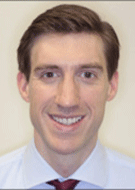
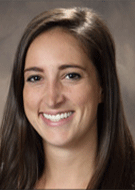
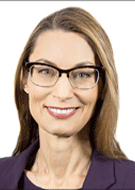
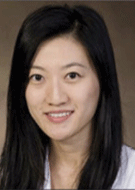

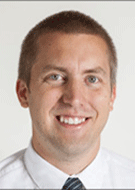
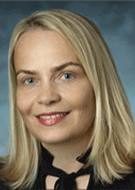
This is the third in a series of RSNA News articles following radiology trainees as they navigate the challenges of COVID-19. Read part one and part two.
The COVID-19 pandemic has altered the trajectory of radiology training as programs have relied more heavily on virtual education resources.
In addition, program directors have had to make swift changes to accommodate virtual learning while ensuring that residents were kept safe as they continued learning and maintained their skills.
Virtual Learning Becomes the Norm
Matt Smith, MD, PhD, is an R2 at Vanderbilt University Medical Center in Nashville, TN, where residents were divided into two onsite rotation groups, alternating weekly. When at home, residents could participate in lectures and conferences virtually and supplement the decrease in case volume with digital cases. But during times of low case volume or when he had time off service, reading became his primary tool for education.
“Reading a book is often secondary to seeing cases,” Dr. Smith said. “However, it helped me to leverage my clinical experiences as a foundation and continue to expand upon my knowledge related to each specialty. I also continue to create and study flashcards. While there is utility in simply creating them, I’ve found that establishing a consistent study schedule promotes long-term learning.”
Less time in the reading room allows more time at home to study for Kelsey Guerreso, MD, an R3 at Vanderbilt. She has taken advantage of the time to take a deep dive into radiology topics that interest her.
“One of our attendings sent out a comprehensive list of free open access radiology resources which I found extremely helpful,” Dr. Guerreso said. “I have watched lectures from resident boot camps at national meetings and from faculty at radiology programs throughout the country and completed several case-based learning tutorials.”
Similarly, Lucy Lester, MD, a PGY4 at Northwestern McGaw Medical Center, Chicago, and a member of the RSNA News editorial board, is using her time at home to learn through multiple virtual formats.
“Most residents have been working from our own at-home curriculum and our program was able to maintain most of our noon lectures and grand rounds through a virtual format,” Dr. Lester said. “Our attending radiologists and program director sent out plenty of resources for educational materials, including video lectures.”
Some of the attending radiologists created specialized virtual rotations in order to provide small group discussions and case-based teaching, Dr. Lester added. The adjusted curriculum at Johns Hopkins University (JHU) in Baltimore includes daily online resident conferences and subspecialty specific virtual meetings.
“Trainees have a weekly case conference with our professors, who quiz attendees with very challenging cases, which is interesting because we don’t often see our teachers as learners,” said Brad Bennett, MD, an R2 resident at JHU. “But when it comes to the complex and difficult cases, it shows that nearly everybody has something to learn. That specifically was important for keeping up my motivation during this time.”
Watch Dr. Bennett explain how his radiology residency education has changed during COVID-19.
Program Directors Change Tactics
Lilja B. Solnes, MD, the diagnostic radiology and molecular imaging residency program director and associate professor of radiology & nuclear medicine at JHU, swiftly transitioned her program’s education to virtual learning and acknowledges that returning to in-person learning will take some time.
“We were concerned about the inability to teach side by side at the workstation and the reduction in clinical staffing in each reading room that resulted from the social distancing requirement,” Dr. Solnes said. “However, screen sharing quickly became an imperfect but workable solution for remote readouts.”
Preparing junior residents was a particular concern for Cheng Ting Lin, MD, associate program director at JHU and assistant professor of radiology and radiological science.
“As the volume of studies plunged, we became especially concerned about preparing our junior residents for the rigors of overnight call,” Dr. Lin said. “If the resident case load remains low, how do we teach them the basics of radiology, prepare them to handle a high call volume and evaluate their readiness for call?”
To combat this, JHU developed an R1 curriculum that consisted of prior emergency department cases presented in batches as unknowns. Residents interpreted each batch of cases in one sitting to practice maintaining the focus necessary during call shifts. These cases were then assessed by the training leadership for accuracy, which allowed senior staff to assess call readiness.
“In addition, we reviewed cases with the trainees in weekly virtual conferences with attention to common mistakes and pitfalls,” Dr. Solnes said. “Much care was taken to pick a variety of cases that would build a strong foundation. Reinforcing the junior resident educational armamentarium with additional resources and opportunities for continuous, uninterrupted learning helped simulate clinical practice.”
Watch Dr. Solnes explain the changes to radiology resident education that occurred at Johns Hopkins.
Arlene Kanigan, MD, program director of the diagnostic radiology residency program at the University of Alberta, Edmonton, Canada, pivoted trainees to a home-based learning rotation, allowing residents to view, review and report cases from home and access extensive lists of recommended, free, high-quality online learning resources.
“This entirely new way of training needed a clear structure, uniform expectations and a means of accountability,” Dr. Kanigan said. “To address this, we developed a credit-based system in which the residents would earn credits for a variety of learning and self-assessment activities. All the activities would be documented by the residents and reviewed by their preceptors, and they were required to earn a set number of credits per week.”
Supporting Physical, Mental Wellness
Leaders at JHU paid careful attention to resident safety and wellness while making changes to the learning environment by incorporating related activities into the online curriculum.
“Previous research done by our university has shown that radiology resident physicians suffer high levels of stress, depression and burn-out,” Dr. Kanigan said. “The pandemic added even more uncertainty, anxiety and social isolation, which put the psychological well-being of our learners at even greater risk.”
Residents could earn credit for up to two hours of wellness activities per day, which would count toward the total required for completion of their rotation
“By building wellness time into the design of the rotations and assigning a credit value equal to more traditional academic activities, we hoped participation in wellness activities would increase,” Dr. Kanigan said. “The feedback from the residents was very positive."
Watch Dr. Kanigan explain how the University of Alberta pivoted to assist radiology residents continue to learn online.
Long-Term Impact Still Unknown
In considering how the pandemic has affected trainees, Dr. Solnes said that most residents will easily catch up because there are now additional educational resources available online.
“The radiology curriculum will be more versatile in its delivery, which in turn enhances the education opportunities and experience during residency,” Dr. Solnes said. “The silver lining in this experience is that we expanded our toolkit for teaching and we now recognize that a hybrid model of in-person and online/virtual teaching allows us to effectively teach a greater number of trainees, each with different learning styles.
Dr. Kanigan agrees the combination of virtual and in-person training could be beneficial in the long run.
“Virtual training has its advantages but also significant deficiencies. It can never be a complete substitute for the in-person experience,” she said. “However, we have new opportunities for remote learning and collaboration, which I hope will continue.”
As a resident, Dr. Guerreso admits that it is hard to know what the long-term impact of this education pivot will have on radiology trainees, but she said she thinks the experience has yielded positive outcomes.
“I don’t think that a few months of an adjusted schedule will impact the type of radiologist anyone will be or hinder their ability to pass the Core exam,” she said. “If anything, I think we can all walk away from this with an appreciation for the necessity of the work we do, the importance of maintaining a wide variety of skills, and the ability to be flexible within our workspace.”
For More Information
Access the RSNA COVID-19 Resources at RSNA.org/COVID-19.
Access the recorded webinar, "The Impact of COVID-19 on Radiology Residents and Resident Education."